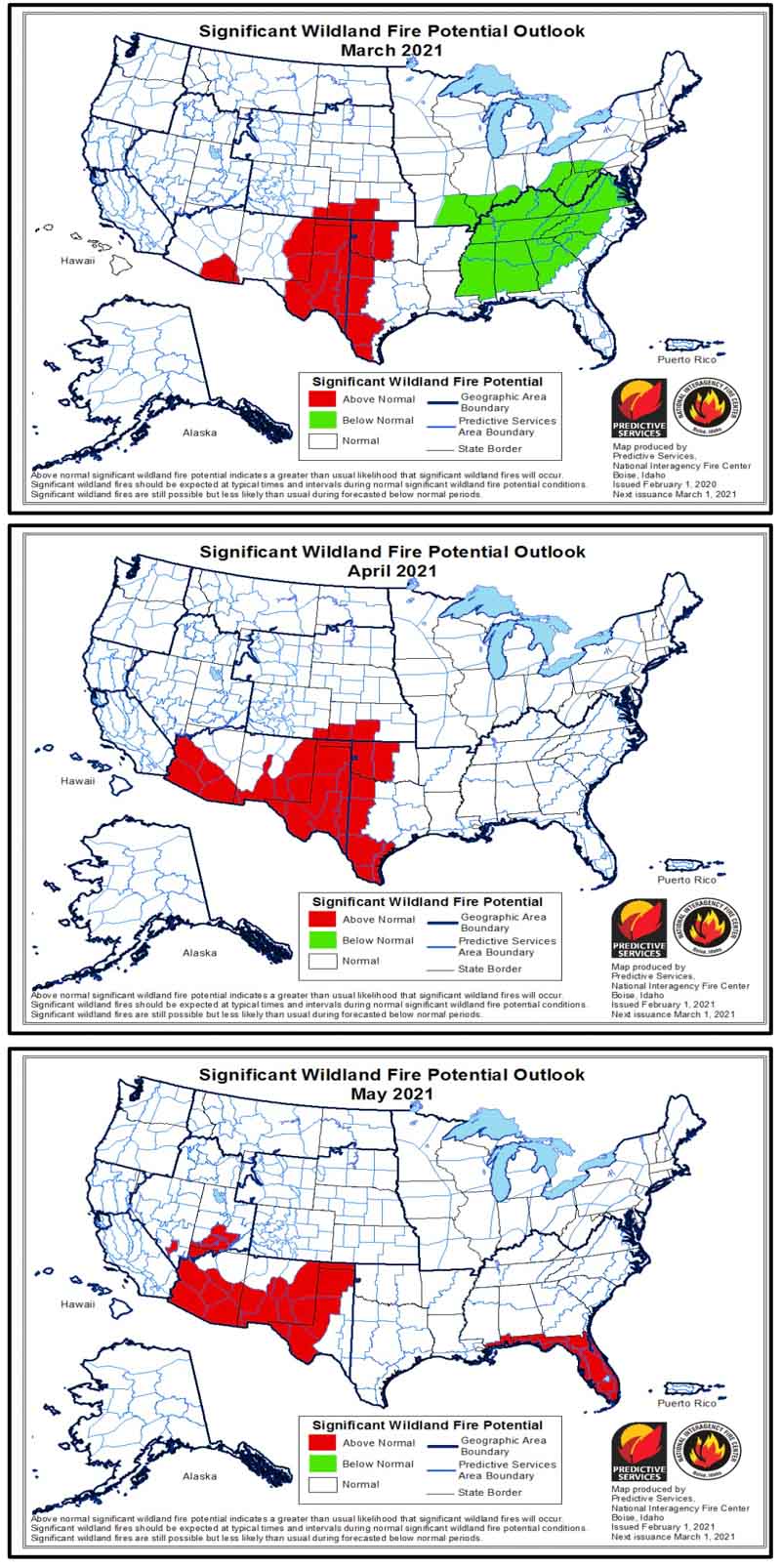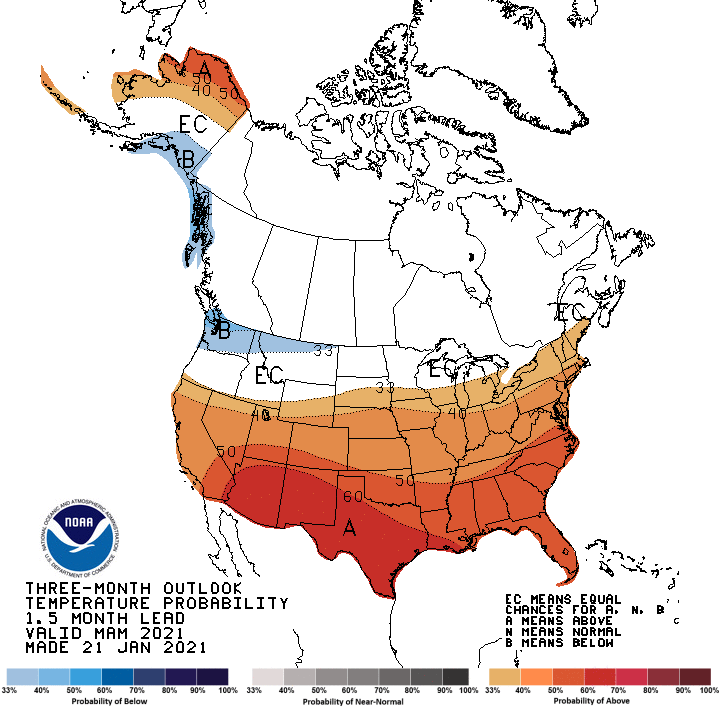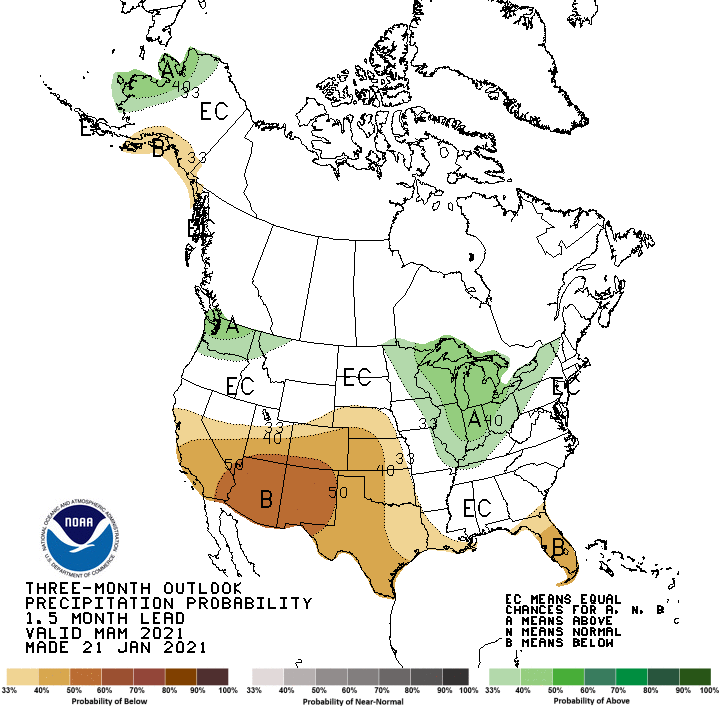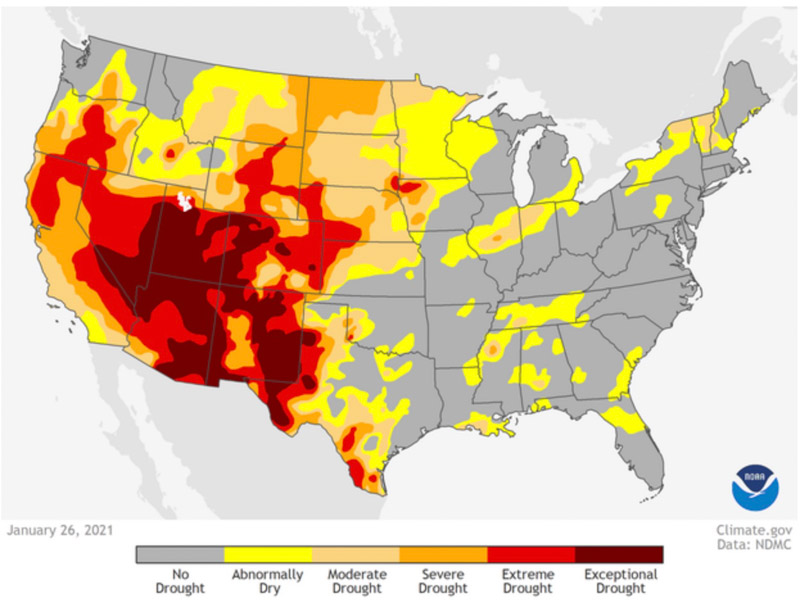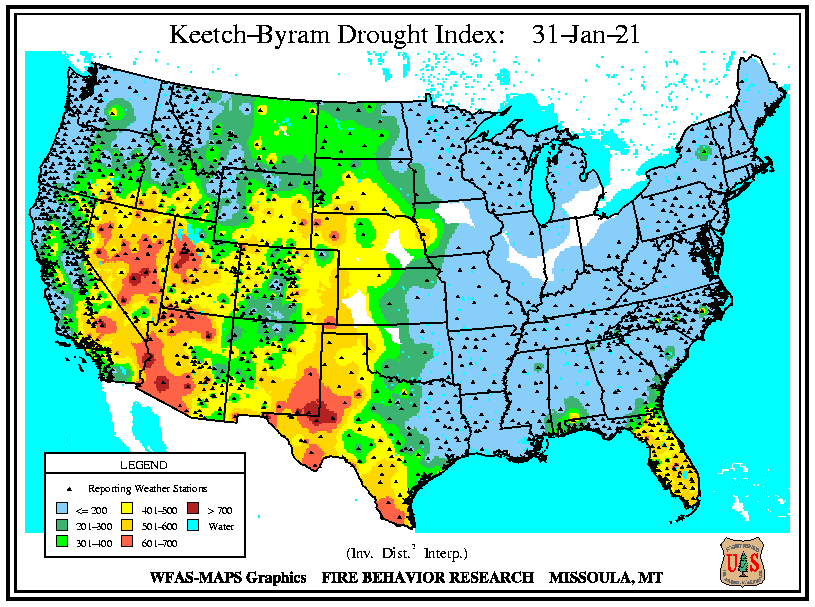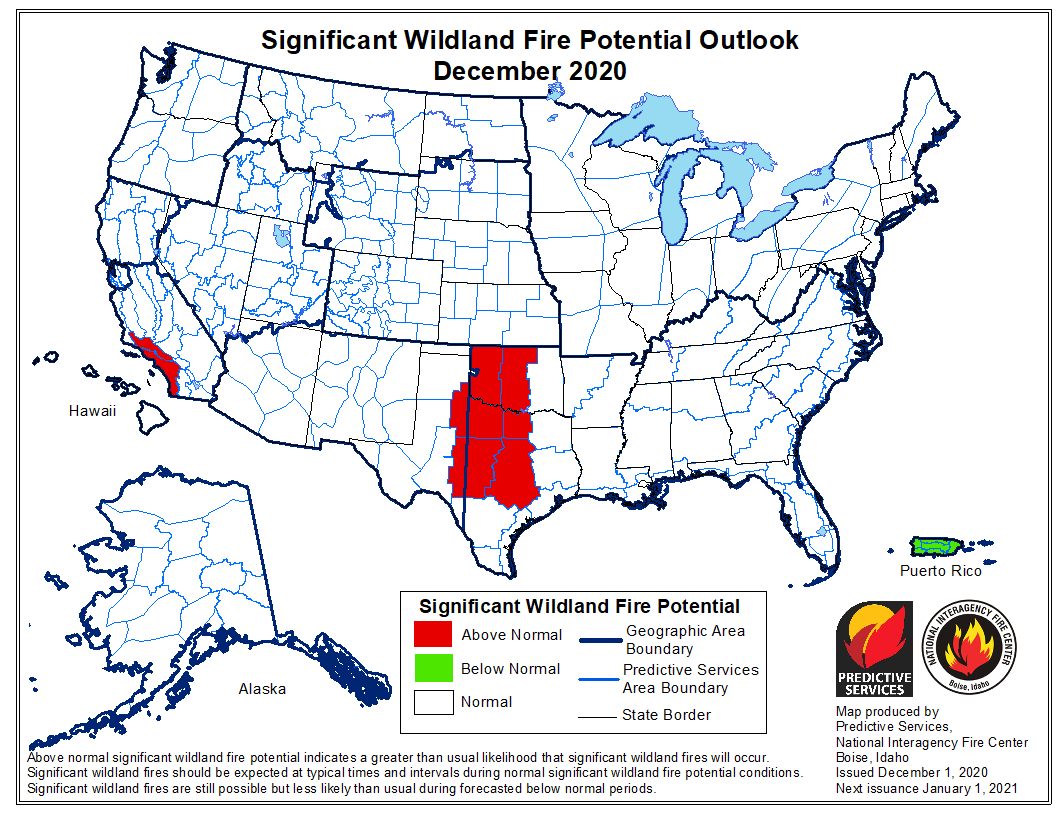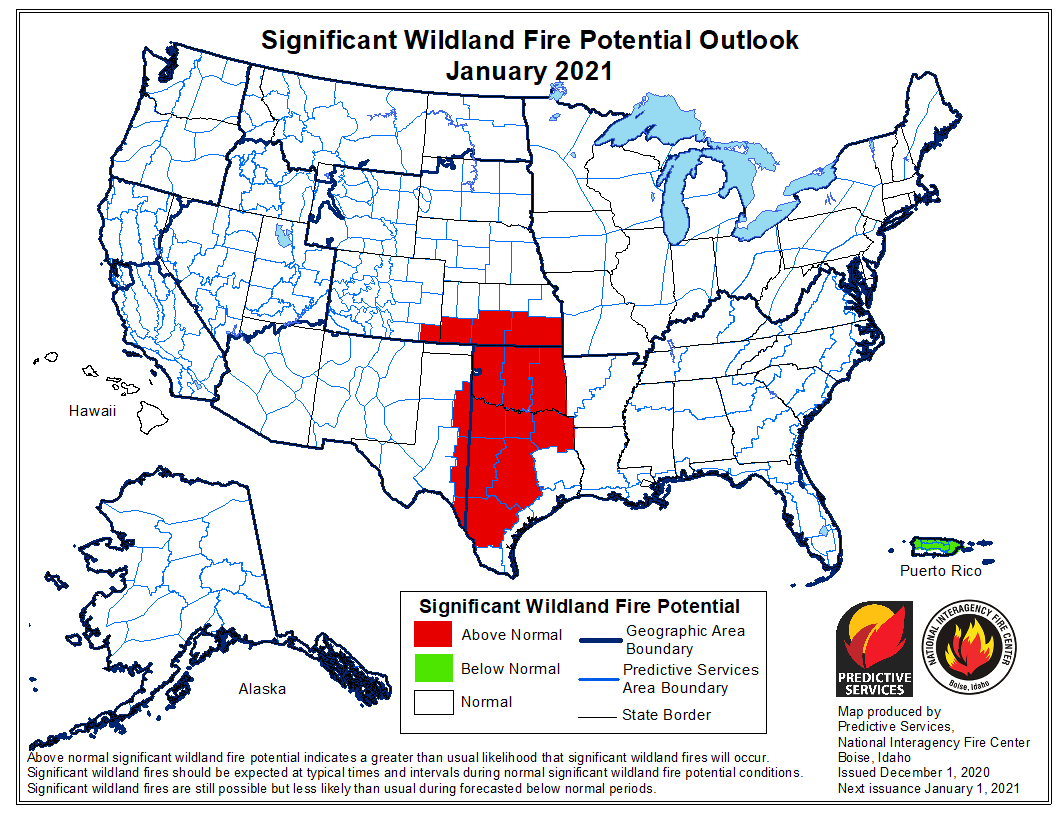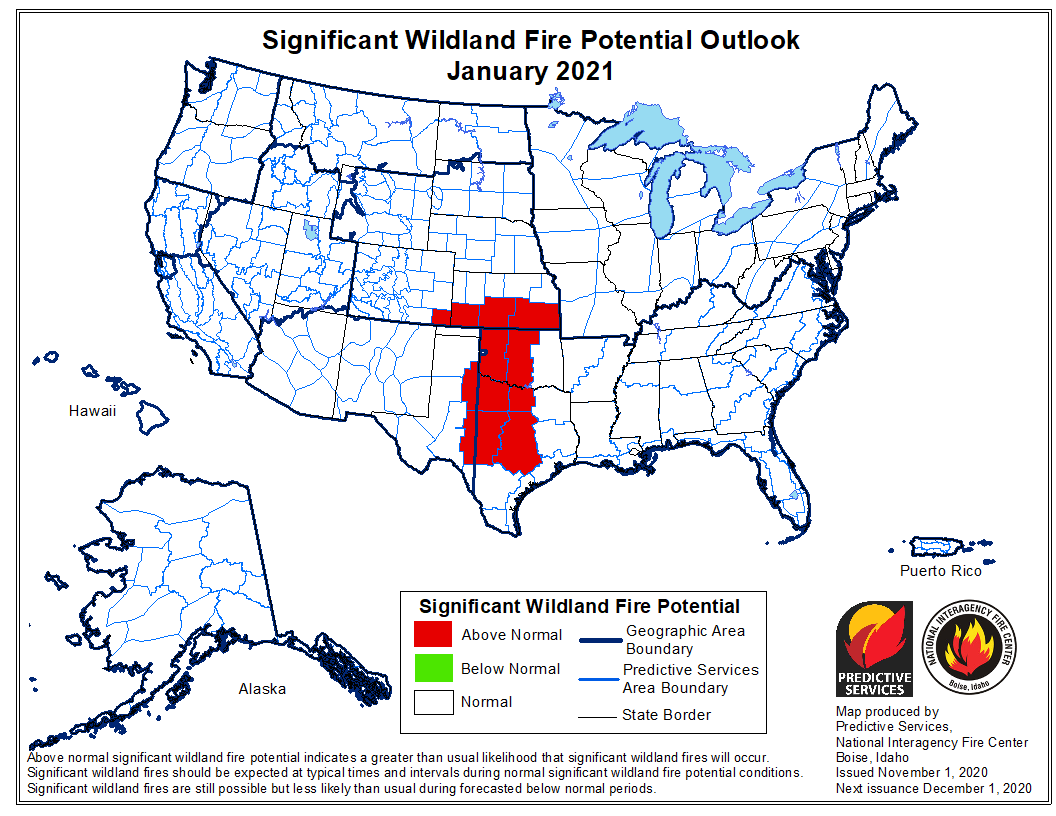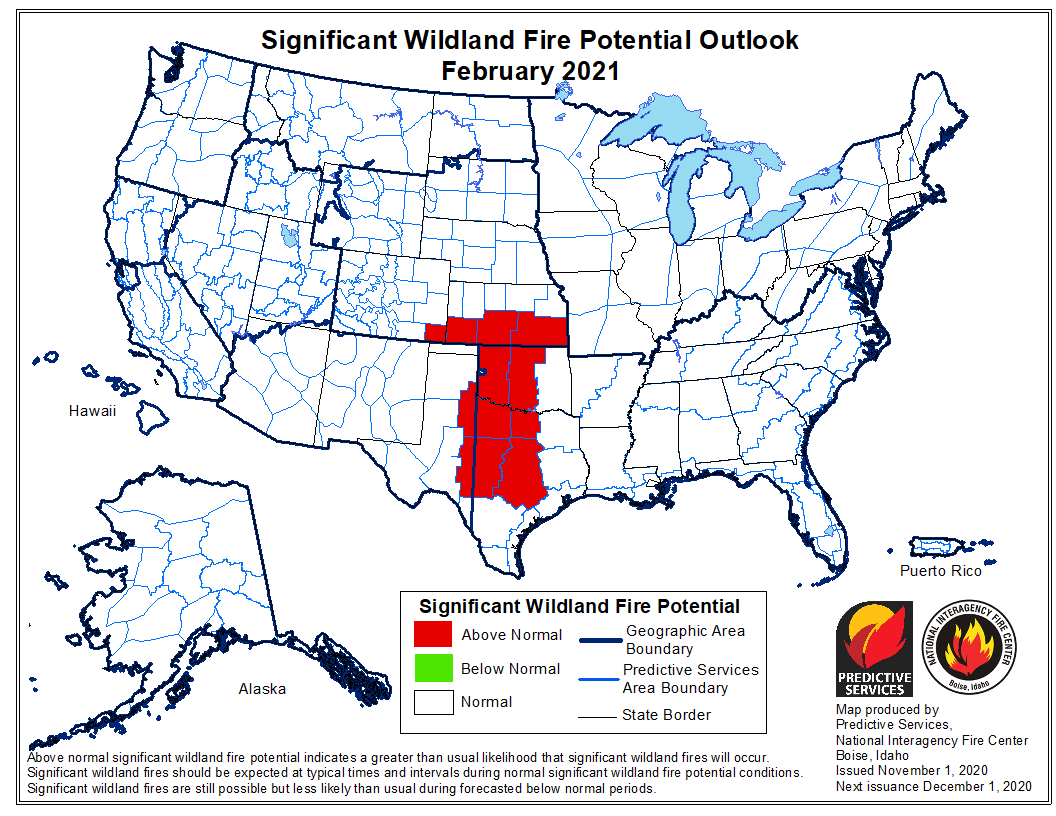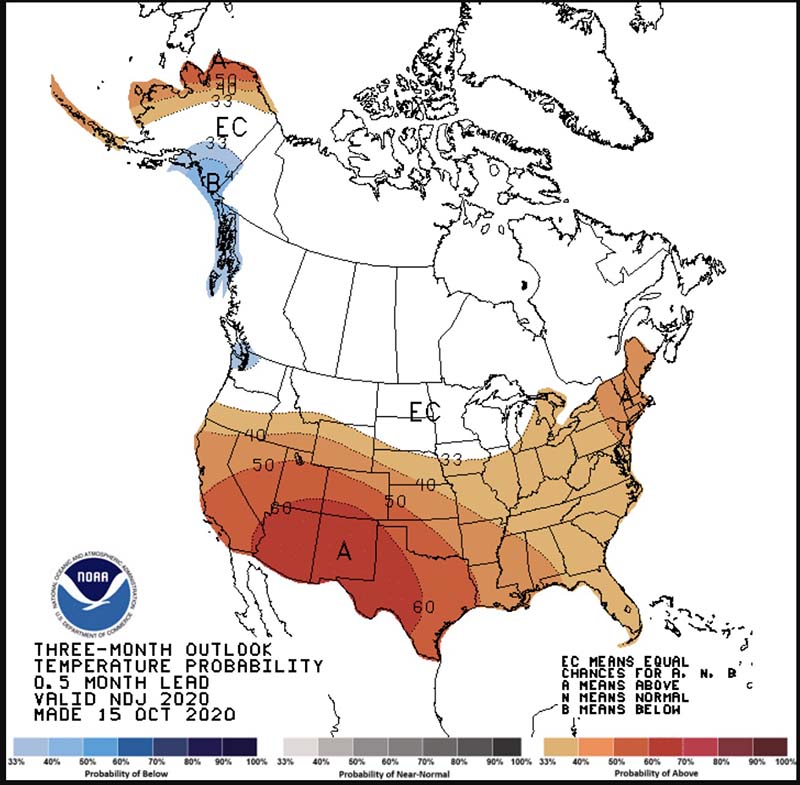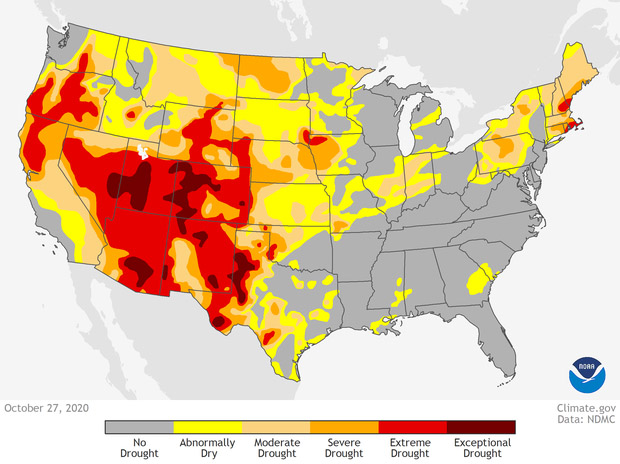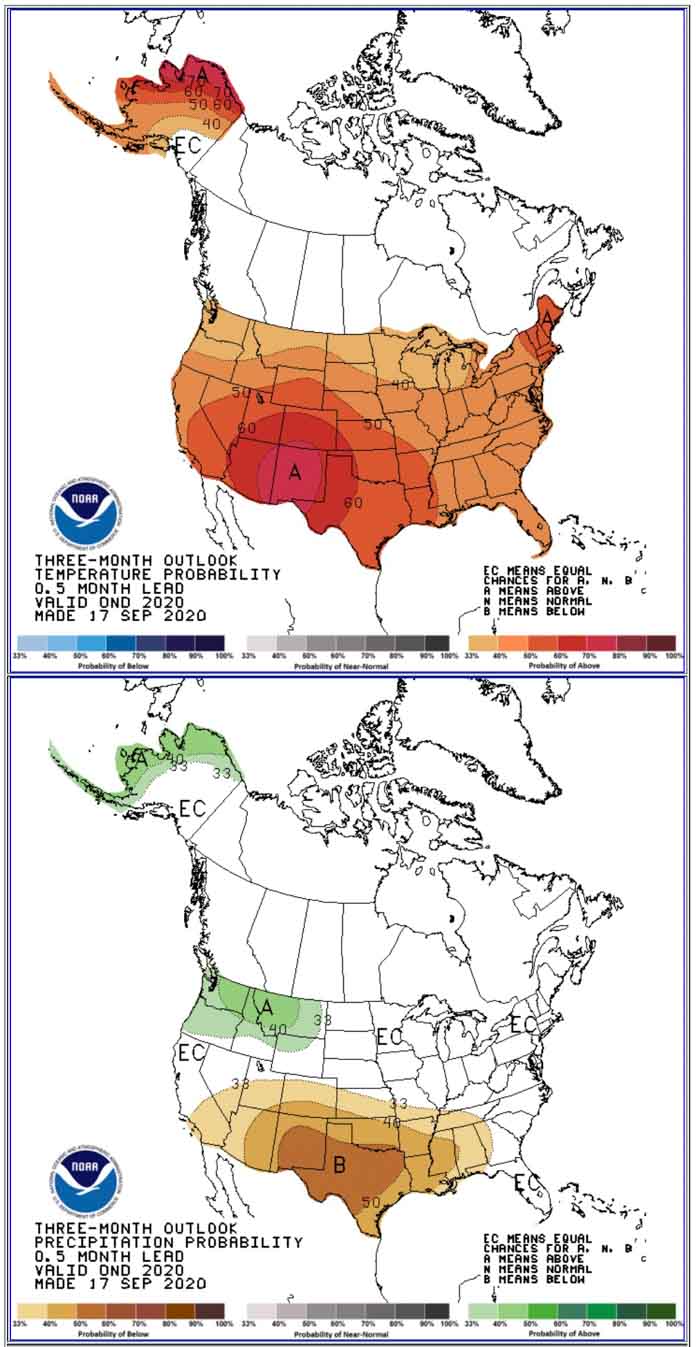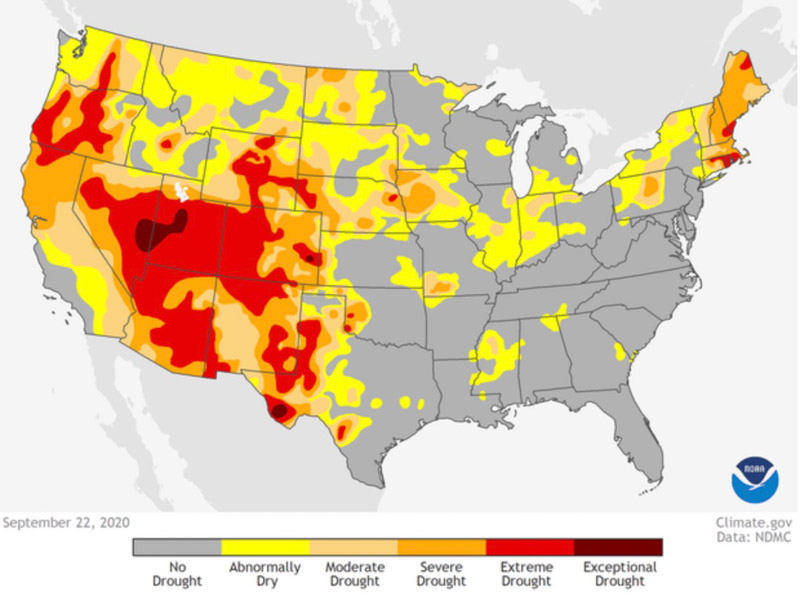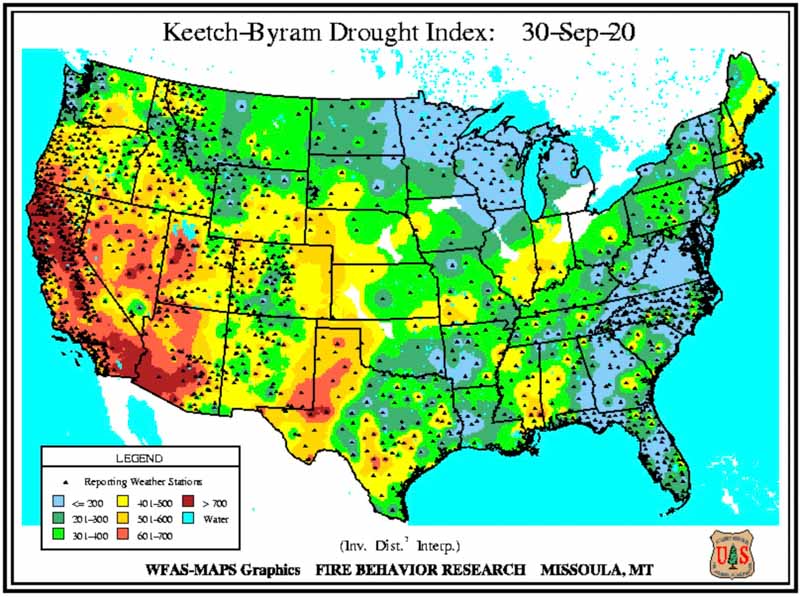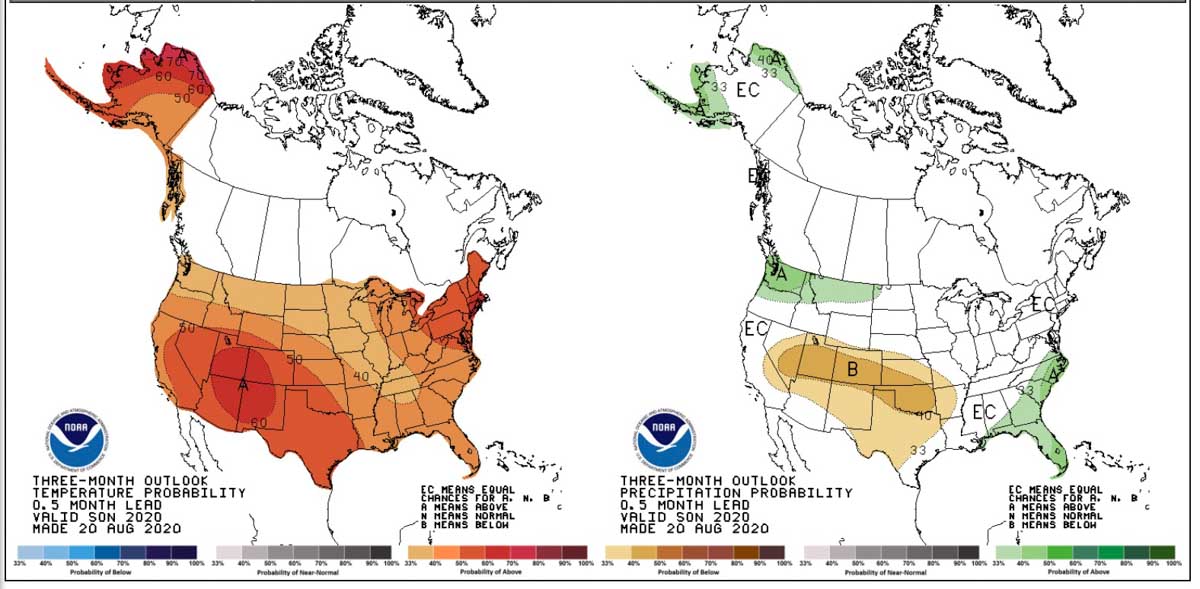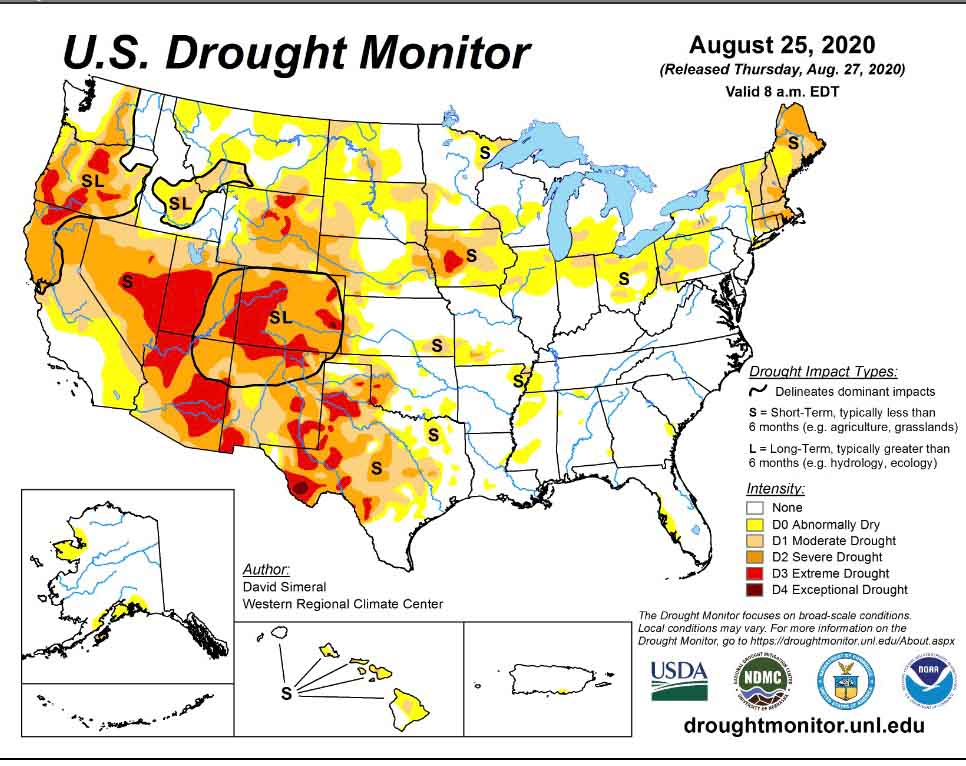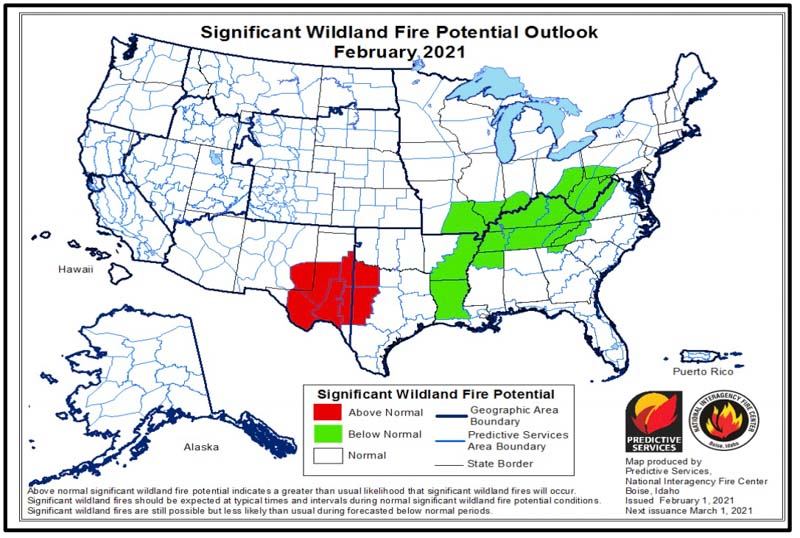
The National Significant Wildland Fire Potential Outlook issued February 1 by the Predictive Services section at the National Interagency Fire Center pointed out that widespread and in some areas heavy precipitation reduced fire potential across Southern California and the Southwest in the later part of January. They predict wildfire potential will begin increasing to higher than normal levels in the Southwest in March and by May will affect large portions of Texas, Arizona, and New Mexico.
The data from NIFC shown here represents the cumulative forecasts of the ten Geographic Area Predictive Services Units and the National Predictive Services Unit.
Below:
- An excerpt from the NIFC narrative report for the next several months;
- More of NIFC’s monthly graphical outlooks;
- NOAA’s three-month temperature and precipitation forecasts;
- Drought Monitor;
- Keetch-Byram Drought Index.
“Below normal precipitation was observed across much of the United States (US), especially the contiguous US (CONUS), in January. Above normal temperatures were also prevalent with the strongest anomalies on the northern Plains and across the Great Lakes into the Northeast. Portions of the Plains extending into the Missouri Valley and Ozarks observed above normal precipitation. Precipitation during the last week of January helped ease precipitation and snowpack deficits across the West, but most areas remain below normal for this time of year.
“La Niña will continue to significantly affect the weather and climate patterns into spring. Drought conditions are expected to continue for much of California, the Great Basin, and the Southwest into spring with drying expected to increase across portions of the Plains and Southeast. However, drought improvement and possibly removal is forecast for portions of northwest California through Oregon.
“Climate outlooks suggest normal to below normal significant fire potential is likely for large portions of the Southeast, Ohio Valley, Appalachians, and Mid-Atlantic into spring. However, an early and active start to the fire season is expected for the southern High Plains during late winter and continuing into the spring.
“Significant fire potential is forecast to be above normal during the spring across the Southwest and southern Plains due to background drought and forecast drier and warmer than normal conditions. Lower elevations in the Southwest are favored to have above normal significant fire potential beginning in March and April. Oklahoma, eastern New Mexico, and most of Texas are forecast to have an active spring fire season before green-up in March and April and possibly beginning as early as February. Above normal significant fire potential is also likely to extend north into southern Kansas and southeast Colorado in March and April. By May, much of the Southwest and Florida and portions of the southern Great Basin are likely to have above normal significant fire potential.”
